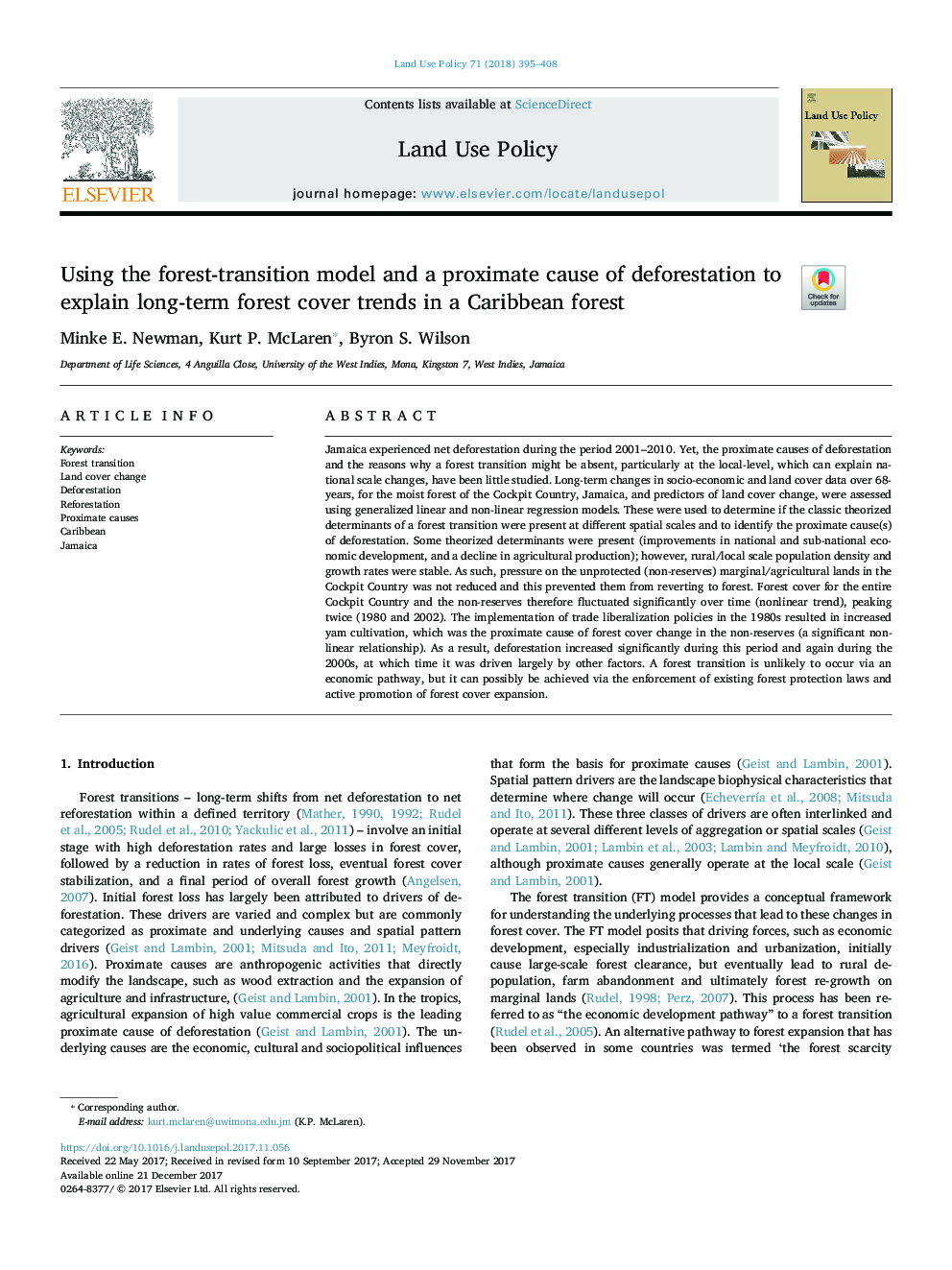| Article ID | Journal | Published Year | Pages | File Type |
|---|---|---|---|---|
| 6546657 | Land Use Policy | 2018 | 14 Pages |
Abstract
Jamaica experienced net deforestation during the period 2001-2010. Yet, the proximate causes of deforestation and the reasons why a forest transition might be absent, particularly at the local-level, which can explain national scale changes, have been little studied. Long-term changes in socio-economic and land cover data over 68-years, for the moist forest of the Cockpit Country, Jamaica, and predictors of land cover change, were assessed using generalized linear and non-linear regression models. These were used to determine if the classic theorized determinants of a forest transition were present at different spatial scales and to identify the proximate cause(s) of deforestation. Some theorized determinants were present (improvements in national and sub-national economic development, and a decline in agricultural production); however, rural/local scale population density and growth rates were stable. As such, pressure on the unprotected (non-reserves) marginal/agricultural lands in the Cockpit Country was not reduced and this prevented them from reverting to forest. Forest cover for the entire Cockpit Country and the non-reserves therefore fluctuated significantly over time (nonlinear trend), peaking twice (1980 and 2002). The implementation of trade liberalization policies in the 1980s resulted in increased yam cultivation, which was the proximate cause of forest cover change in the non-reserves (a significant non-linear relationship). As a result, deforestation increased significantly during this period and again during the 2000s, at which time it was driven largely by other factors. A forest transition is unlikely to occur via an economic pathway, but it can possibly be achieved via the enforcement of existing forest protection laws and active promotion of forest cover expansion.
Keywords
Related Topics
Life Sciences
Agricultural and Biological Sciences
Forestry
Authors
Minke E. Newman, Kurt P. McLaren, Byron S. Wilson,
